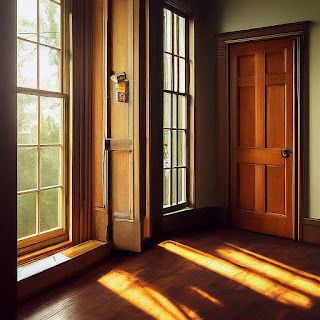Thermal Expansion
The majority of substances increase in volume when exposed to higher temperatures and decrease in volume when cooled. This phenomenon is known as thermal expansion, which occurs due to the increased movement of molecules at higher temperatures. For instance, on a hot day, a wooden door may expand slightly, making it more difficult to close. Conversely, in colder weather, the door might contract, leaving gaps or making it easier to open.
Humidity
Wood, a staple in door and window construction, is highly susceptible to moisture. When humidity rises, wood fibers absorb water, causing the material to expand. During dry weather, the wood releases moisture and contracts. This is why you might notice your wooden doors fitting more snugly in humid seasons and loosening during dry periods.
Material Differences
The extent to which materials expand or contract varies. For example, metals tend to expand more than wood under the same temperature changes. This difference can affect how much doors and windows move, depending on the materials used in their construction.
Design Considerations
The architectural features of doors and windows influence their movement and performance. Factors like the type of hinges, seals, and the overall design can influence how much a door or window changes in response to environmental conditions.
While these changes are typically small, they can become noticeable and may even cause operational issues. It’s essential to consider these factors when choosing and installing doors and windows to minimize potential problems.
Preventing Doors and Windows from Changing Size
Although it’s impossible to completely prevent doors and windows from changing size due to temperature and humidity, there are steps you can take to minimize their impact:
For Wood Doors and Windows
Select Stable Wood Species: Some types of wood are less susceptible to humidity changes. Consult with a local lumberyard or expert to choose wood species that are more stable.
Ensure Proper Sealing: Make sure all gaps between the wood and the frame are properly sealed. This reduces the wood’s ability to absorb moisture from the air.
Regular Maintenance: Applying a high-quality wood finish protects the wood from moisture. Regular maintenance will help keep your doors and windows in optimal condition.
Control Humidity: Consider using a dehumidifier during damp seasons to reduce moisture levels in your home, preventing excessive expansion.
General Tips for All Materials
Quality Installation: Proper installation is critical. Ensure that the door or window is installed according to the manufacturer’s instructions to prevent future issues.
Regular Adjustments: Periodically check hinges, seals, and hardware. Tighten any loose screws and make adjustments as needed to maintain smooth operation.
Weatherstripping: Use weatherstripping to seal gaps around the door or window frame. In addition to boosting energy performance, this approach effectively manages dimensional changes.
Adequate Ventilation: Good ventilation helps regulate indoor humidity levels, reducing the likelihood of significant size changes.
Additional Considerations
Double or Triple Glazing: Investing in double or triple-glazed windows can reduce temperature fluctuations inside your home, minimizing the impact on doors and windows.
Low-E Coatings: Low-emissivity (Low-E) coatings on windows can reflect heat, reducing energy consumption and maintaining a more stable indoor environment, indirectly affecting door and window stability.
By implementing these measures, you can significantly reduce the effects of temperature and humidity on your doors and windows, ensuring better performance and a longer lifespan.
Sources and References
- Thermobilt - The Impact of Seasonal Changes on Your Windows and Doors
- Caltech - Some Alloys Don’t Change Size When Heated: We Now Know Why
- Real Wood Crafters - Why and When Do Wooden Doors Swell?
- LibreTexts - Thermal Expansion
- Vivid Doors - Winter Door Problems and How to Fix Them
- Airtec Solutions - Wood and Humidity
- Hardwood Distributors - Why Does Dried Wood Absorb Moisture?
- Swedish Wood - Moisture-Related Wood Movement
- TutorChase - Why Do Different Materials Have Different Thermal Expansion Rates?
- The Metal Warehouse - Building with Steel
- Wagner Meters - How Relative Humidity Affects Wood Moisture Content
- Acculevel - Why Are My Doors and Windows Sticking?
- Showroom Windows - Maintaining and Extending the Lifespan of Your Windows and Doors
- Energy.gov - Weatherstripping





0 Comments